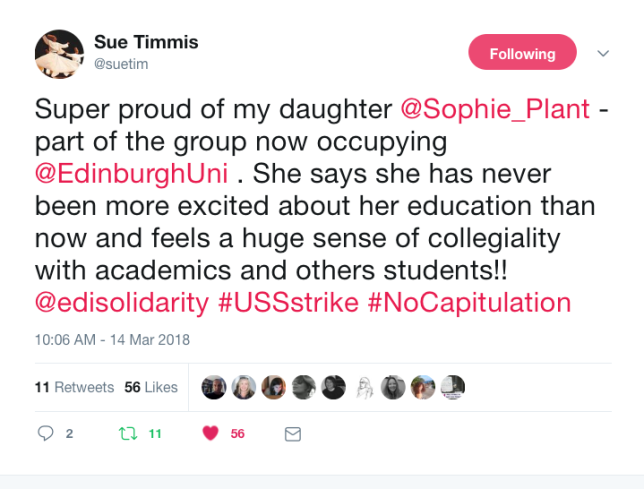
The last few weeks of the strike to protect pensions for university workers in the UK have been, as most worthwhile things, both challenging and exciting. Yesterday this tweet made my day and brought back memories of a student experience that changed my life, personally & professionally. I shared that story in a publication some time ago (Public Dialogue and Deliberation, p. 7) and I’m reposting it here.
My interest in public dialogue and deliberation began in the winter of 2001 at the University of Santiago de Compostela (Galicia, Spain). It was the final year of my degree in political science, and little did I know, I was about to learn more in the next three months than in the previous five years.
The Spanish Government at the time was preparing a new legal framework for our universities (the Ley Orgánica de Universidades, or LOU). The LOU was controversial. Most student organisations saw it as a threat to our public education system, as well as to our capacity – as students – to contribute to university policies. This set in motion one of the largest student mobilisations in our young democracy, with 200,000 students mobilised in 53 cities. The interesting part, however, was how this was to take place.
The diverse landscape of the student union movement in Santiago, as elsewhere in Spain, was the result of a history of acrimony amongst factions across the ideological spectrum. Accordingly, student organisations acted as partisan blocks with entrenched ideas and ways of working. Adversarial show-offs and deprecating routines were commonplace. It was a bit like that iconic scene depicting rival factions in the film Life of Brian, but less funny. This put many students off from getting involved in the union movement.
When the LOU protests began, many non-unionised students wanted to get involved. In Santiago this meant that, from the very first forums, a different modus operandi started to settle in. Unconcerned with the internal dramas of the student unions’ world, these participants brought alternative ideas and communication patterns. Soon a tacit consensus emerged: this was not going to be simply a series of strikes spearheaded by various student unions, this was to become a student assembleary movement, including a broad range of participants.
Accordingly, assemblies were formed in each Faculty and there was also a general assembly every evening in a large public square. They typically included a diversity of non-unionised students as well as student representatives who rarely gathered together to discuss issues of common concern. One of the first collective decisions was for the unions to put down their respective flags and rally under shared banners. Everyone accepted that the assemblies would make the decisions and lead the mobilisations collectively using a distributed model of leadership.
The assembly movement became a truly creative operation in which thousands of participants became involved –the largest rally saw 25,000 participants through the streets of Santiago. Firstly, we discussed how to organise ourselves and the dynamics between the local and general assemblies. Soon we decided that we might as well take advantage of our disciplinary structures. Accordingly, the Faculty of Law’s assembly would be in charge of proposing amendments to the LOU, as well as coming up with an alternative law altogether. The assembly at the Faculty of Political Science would lead on political strategy. The one in Journalism would coordinate anything to do with the media. The one in History would lead on daily activities and keep records. And so on and so forth. These assemblies were open to everyone and always included members of other assemblies to keep communications going (this was before the social media era). We met early in the morning, and then reported to everyone during the evening’s general assembly.
You may begin to gather that this gave place to something beyond the typical string of demonstrations. One of the initiatives, for instance, was to take academic activities to the streets of Santiago. Accordingly, many of our lectures and forums were taken to public squares and corners. To do this, we forged an alliance with teachers, researchers and staff. During those three months the university was not simply brought to a halt, but actually transformed into the kind of alternative university that the assembly was building as a vision.
Santiago was a quintessential student’s city, and thus, we soon gathered substantial public support, from small businesses to various organisations (including local media), as well as individual citizens. Daily public activities (e.g. street art and performances, teach-outs, symbolic events, gigs, etc) and ongoing assemblies became the signature of the process. Therefore, alongside the demonstrations, myriad parallel processes of public dialogue and deliberation took place.
This multiplication of civic conversations across spaces became, in my mind, the closest thing I had witnessed to the vibrant public sphere advocated by some democratic theorists. This public sphere materialised in multiple conversations from street corners to classrooms, from shops to offices, from media outlets to living rooms across Santiago. For many of us, those were three months of I4-hour working days characterised by constant communicative action.
For the assemblies to work, we had to get beyond the usual communication rituals and transform previous patterns of shallow confrontational interaction. In other words, we had to find new ways of talking to each other, ways which would allow us to understand issues and positions, and to foster collective enquiry, in order to engage in collaborative decision-making.
To be sure, this was not an easy process, and the idealist tone of my personal account should not obscure the fact that these became extremely difficult conversations about complex issues beyond the LOU itself. The assemblies were dissolved after Christmas 2001-2002, as the process of amendments to the law proceeded. Much disappointment followed. Despite similarly strong mobilisations in many Spanish cities, the LOU was minimally changed as a result.
You may be left wondering, ‘well, in the end the conclusion was politics as usual’. I disagree. Firstly, many of these processes became schools of direct democracy: spaces where we developed capacity to engage democratically across alternative, often opposing, perspectives within the student movement. Secondly, it changed relationships between students and organisations that previously struggled to find ways of working together. Thirdly, these deliberative dialogues enabled patterns of communication that are crucial for building community resilience, social capital and collective action. Arguably, it was processes like this that prepared the ground for more recent assembly movements such as Los Indignados in Spain in the spring of 2011. Finally, the Santiago assemblies showed that ‘uninvited’ participatory processes can have impact on parliamentary business (e.g. many of our amendments were taken by opposition parties and tabled at parliamentary sessions), and that they can be as effective as traditional political party machines in creating agreements about strategies, actions, and alternative proposals.
Ever since that time I have wanted to understand the quality of communication which enabled those assemblies to become genuine sites for democratic talk oriented to problem-solving and the re-imagining of collective futures. How can we create spaces where passionate engagement can be put to productive ends? How can we use tensions, conflicts, and difference as catalysts for collective enquiry and action?
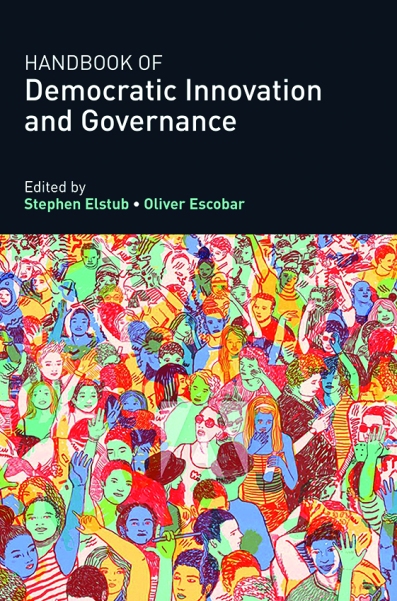
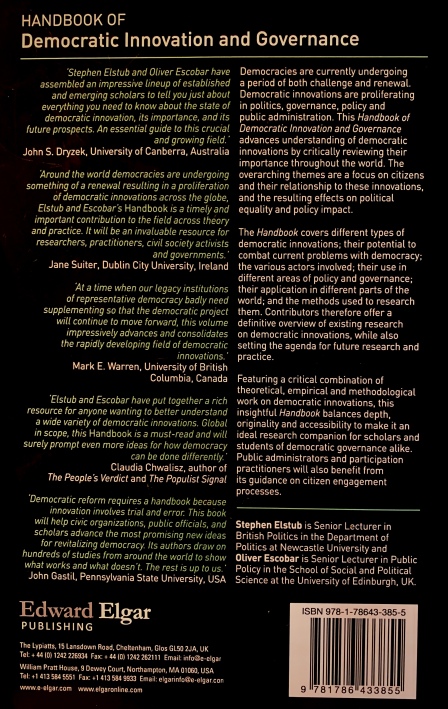
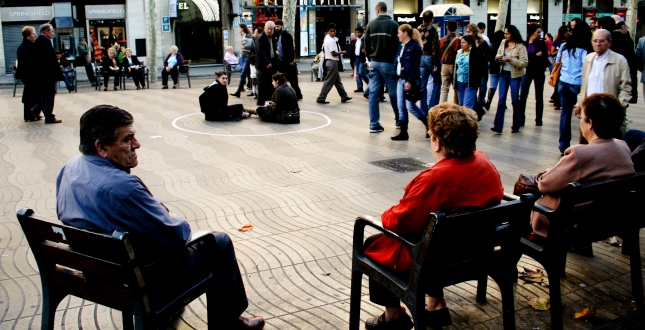
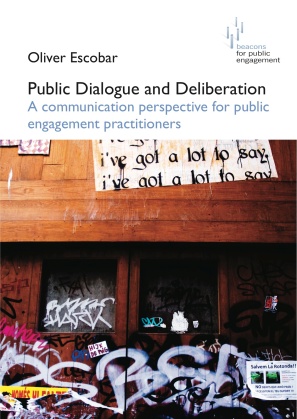 The rhetoric of dialogue and deliberation is sometimes adopted rather uncritically in academic, organisational, and policy circles. Too often that rhetoric is deployed with little understanding of the variety of principles and practices enacted in dialogic and/or deliberative communication. How can dialogue and deliberation be conceptualized and distinguished from other forms of communication? What does it take to facilitate these forms of communication in practice? What ideas about democracy underpin them? What kind of changes in academic, popular and policy-making cultures does it call for?
The rhetoric of dialogue and deliberation is sometimes adopted rather uncritically in academic, organisational, and policy circles. Too often that rhetoric is deployed with little understanding of the variety of principles and practices enacted in dialogic and/or deliberative communication. How can dialogue and deliberation be conceptualized and distinguished from other forms of communication? What does it take to facilitate these forms of communication in practice? What ideas about democracy underpin them? What kind of changes in academic, popular and policy-making cultures does it call for?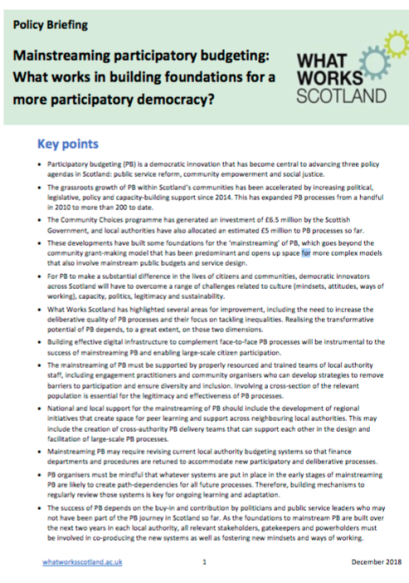
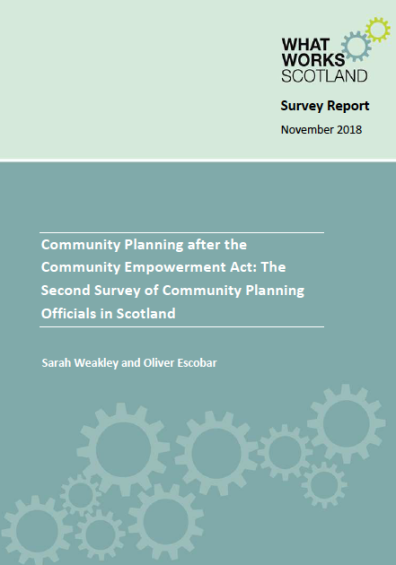
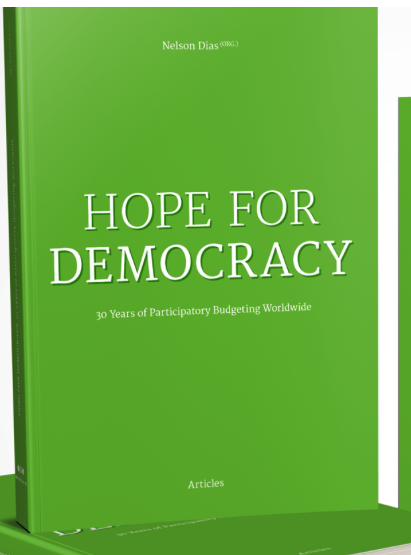
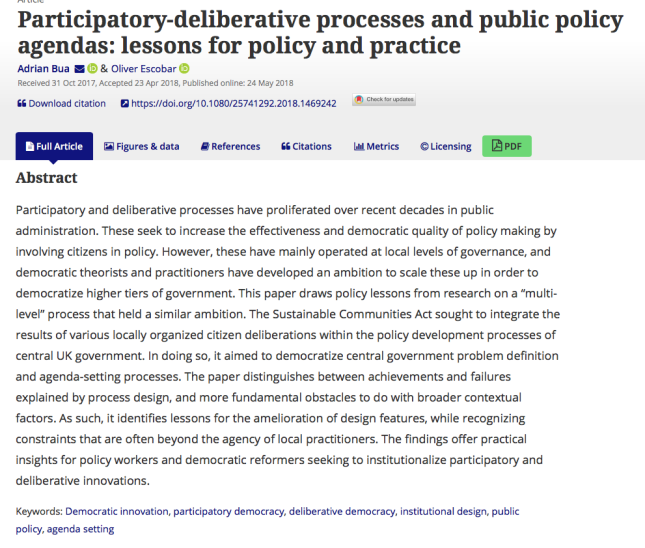
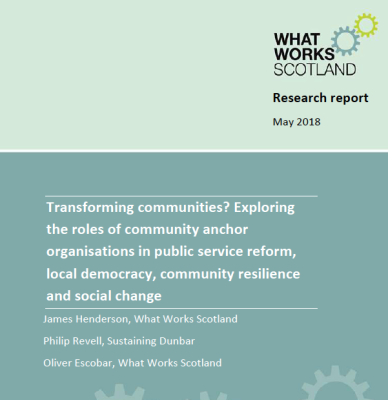
 Community planning officials constitute one of the most significant groups of local public servants in Scotland today. They work across a broad range of key policy areas and are at the forefront of advancing the agenda laid out by the Christie Commission on the Future Delivery of Public Services and legislation such as the Community Empowerment (Scotland) Act.
Community planning officials constitute one of the most significant groups of local public servants in Scotland today. They work across a broad range of key policy areas and are at the forefront of advancing the agenda laid out by the Christie Commission on the Future Delivery of Public Services and legislation such as the Community Empowerment (Scotland) Act.
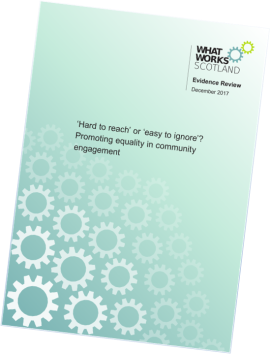 Equality and community engagement are central to core policy developments and frameworks that guide current public sector reform: i.e. Christie Commission on the Future Delivery of Public Services; Community Empowerment Act 2015; Fairer Scotland; Convention of Scottish Local Authorities’ Commission on Strengthening Local Democracy.
Equality and community engagement are central to core policy developments and frameworks that guide current public sector reform: i.e. Christie Commission on the Future Delivery of Public Services; Community Empowerment Act 2015; Fairer Scotland; Convention of Scottish Local Authorities’ Commission on Strengthening Local Democracy.